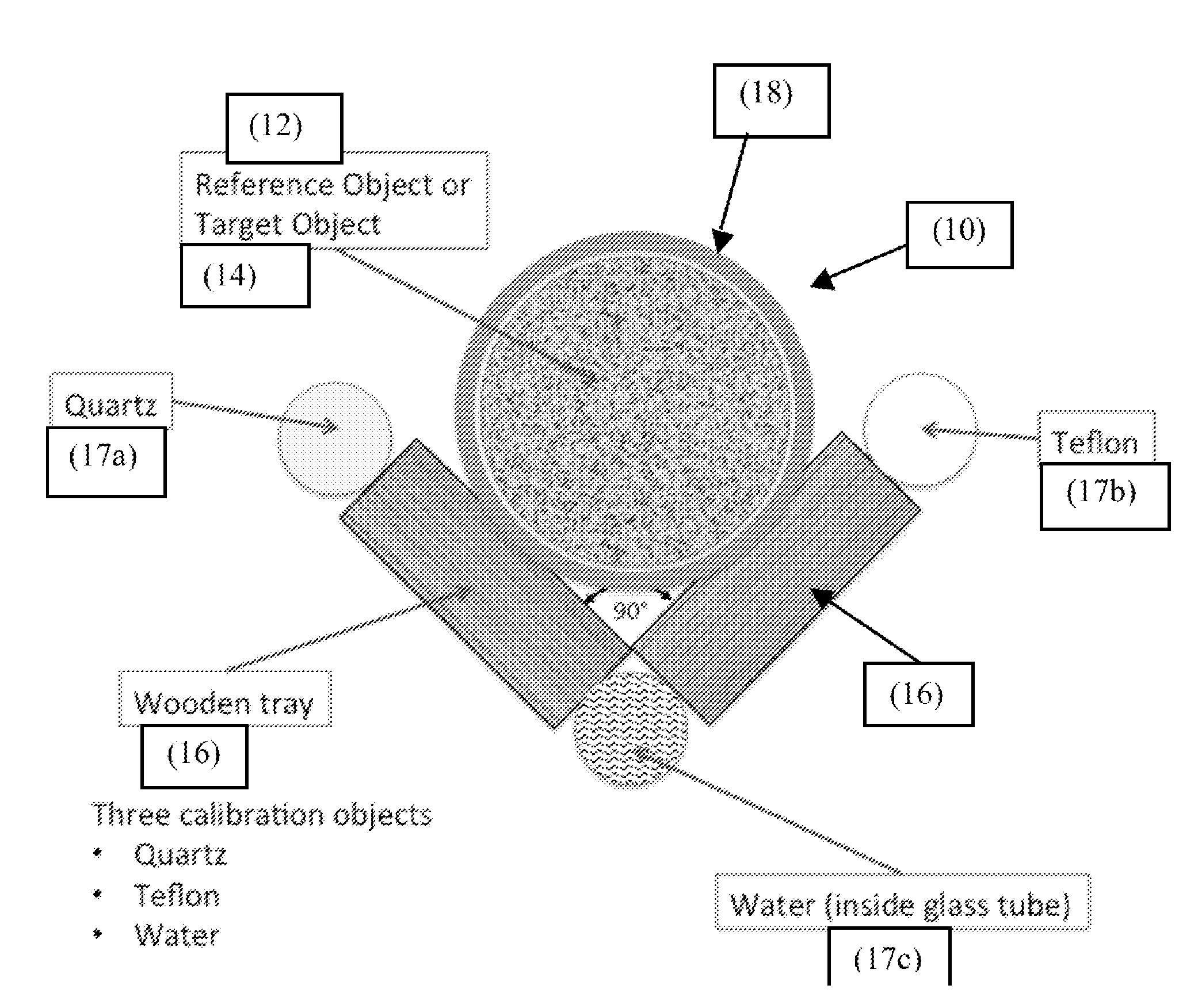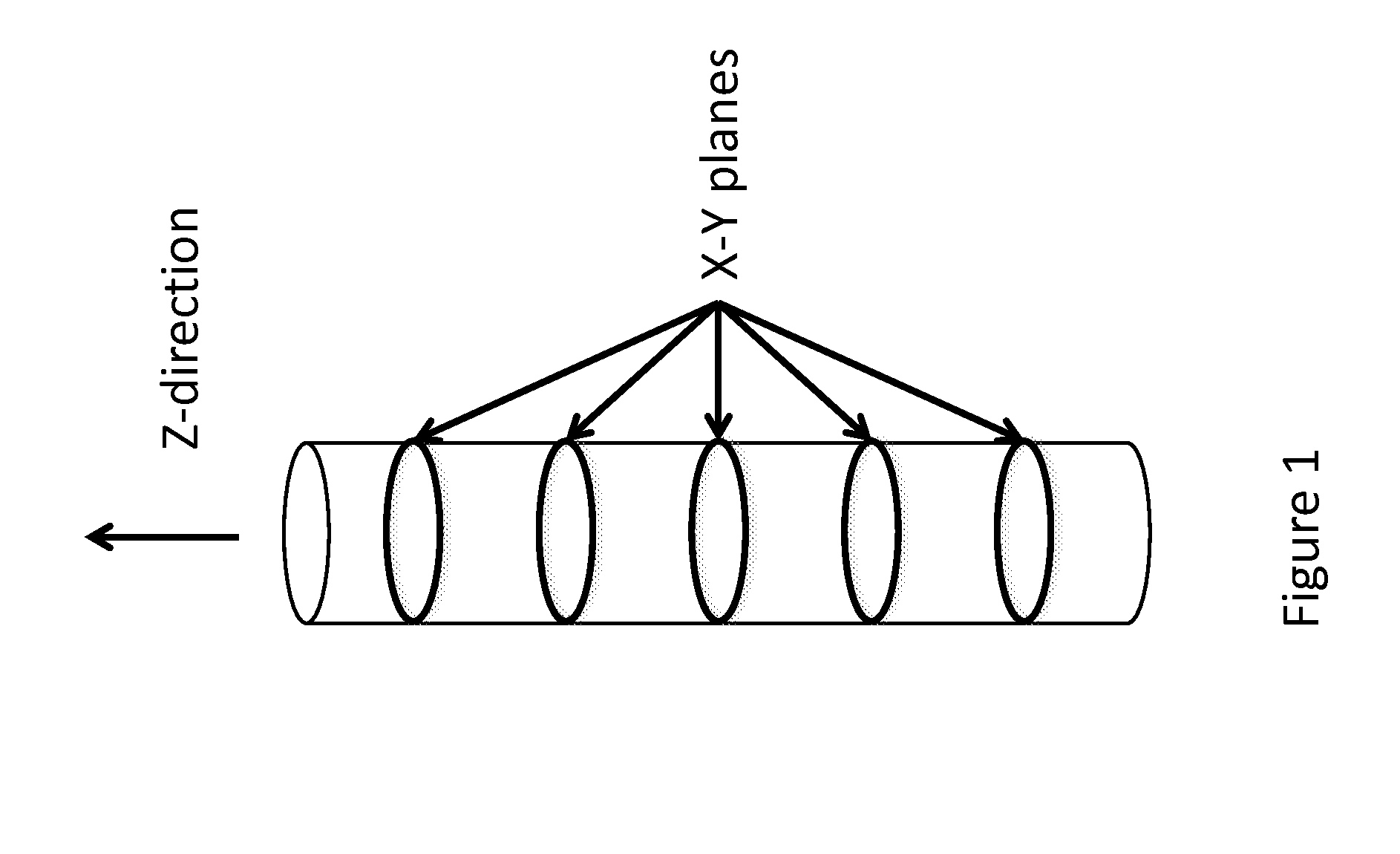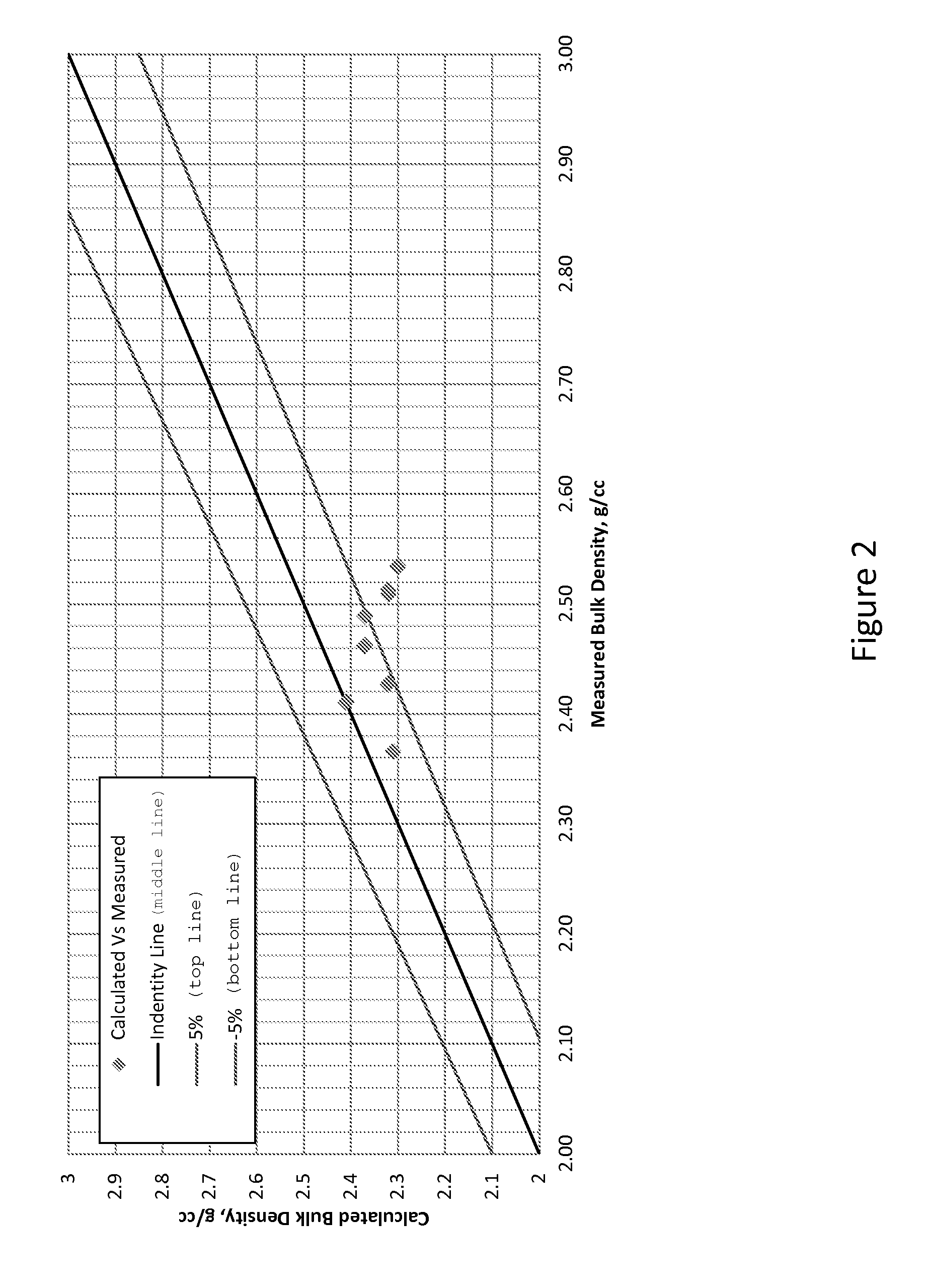Method For Estimating Effective Atomic Number And Bulk Density Of Rock Samples Using Dual Energy X-Ray Computed Tomographic Imaging
a computed tomographic imaging and x-ray technology, applied in the field of digital rock physics, can solve the problems of insufficient accuracy of atomic number of rock samples or well cores, inability to provide suitable information to the drilling and hydrocarbon recovery industry, and difficulty in explaining the relationship between the effective atomic number and the bulk density value calculated by the dual energy method
- Summary
- Abstract
- Description
- Claims
- Application Information
AI Technical Summary
Benefits of technology
Problems solved by technology
Method used
Image
Examples
examples
[0213]FIGS. 5 and 6a-b show the results of applying the method of the present invention to the same data as shown in FIGS. 2 and 3a-b. Not only is the density error small (never exceeding 2%), the two densities now correlate very well, with a correlation coefficient 0.87. The density / effective atomic number trends now also match expectations based on rock physics.
[0214]FIG. 4 is a graph showing an effective atomic number (Zeff) validation that shows a comparison between effective atomic number obtained from minerology (“COREHD”) of the various examples of sandstone, limestone, and dolomite rock samples indicated in Table 1 and effective atomic number of the same samples calculated with the dual energy approach (“XRD”). The values of effective atomic number that were obtained or calculated in these respective manners are indicated in Table 1. In FIG. 4, the identity line is the solid line located between the +4% line that extends above it, and the −4% line that extends below it.
TABLE...
PUM
 Login to View More
Login to View More Abstract
Description
Claims
Application Information
 Login to View More
Login to View More - R&D
- Intellectual Property
- Life Sciences
- Materials
- Tech Scout
- Unparalleled Data Quality
- Higher Quality Content
- 60% Fewer Hallucinations
Browse by: Latest US Patents, China's latest patents, Technical Efficacy Thesaurus, Application Domain, Technology Topic, Popular Technical Reports.
© 2025 PatSnap. All rights reserved.Legal|Privacy policy|Modern Slavery Act Transparency Statement|Sitemap|About US| Contact US: help@patsnap.com



